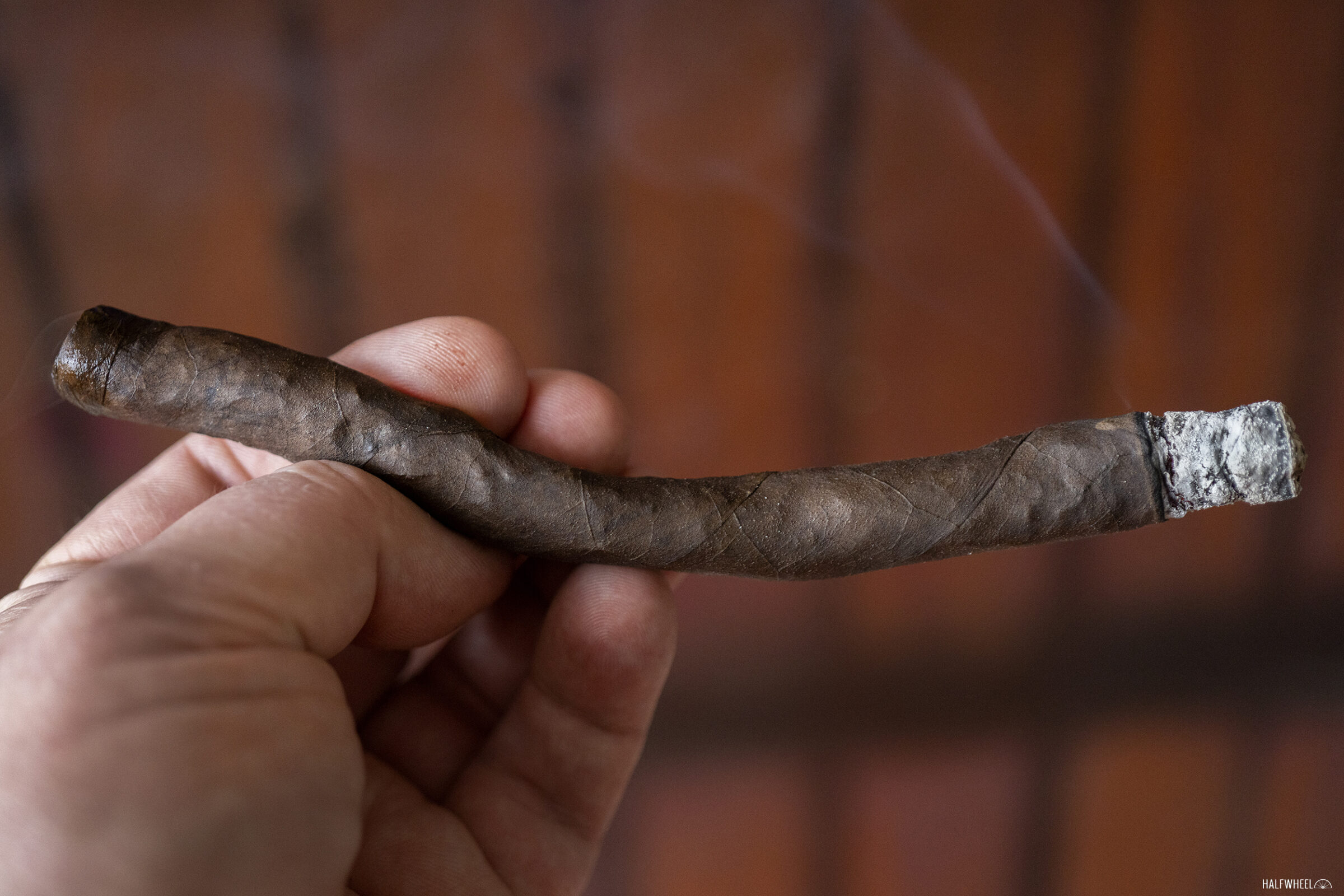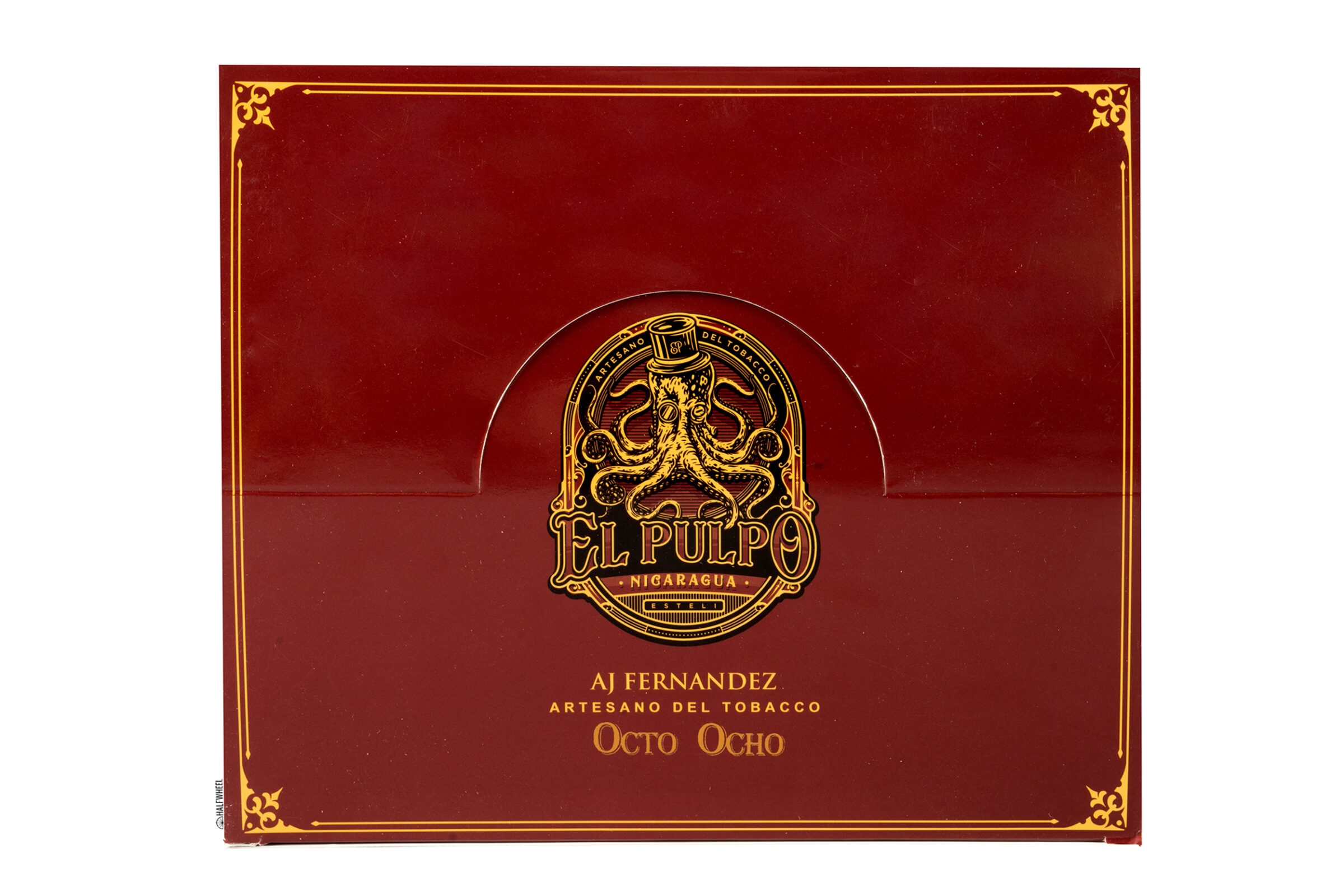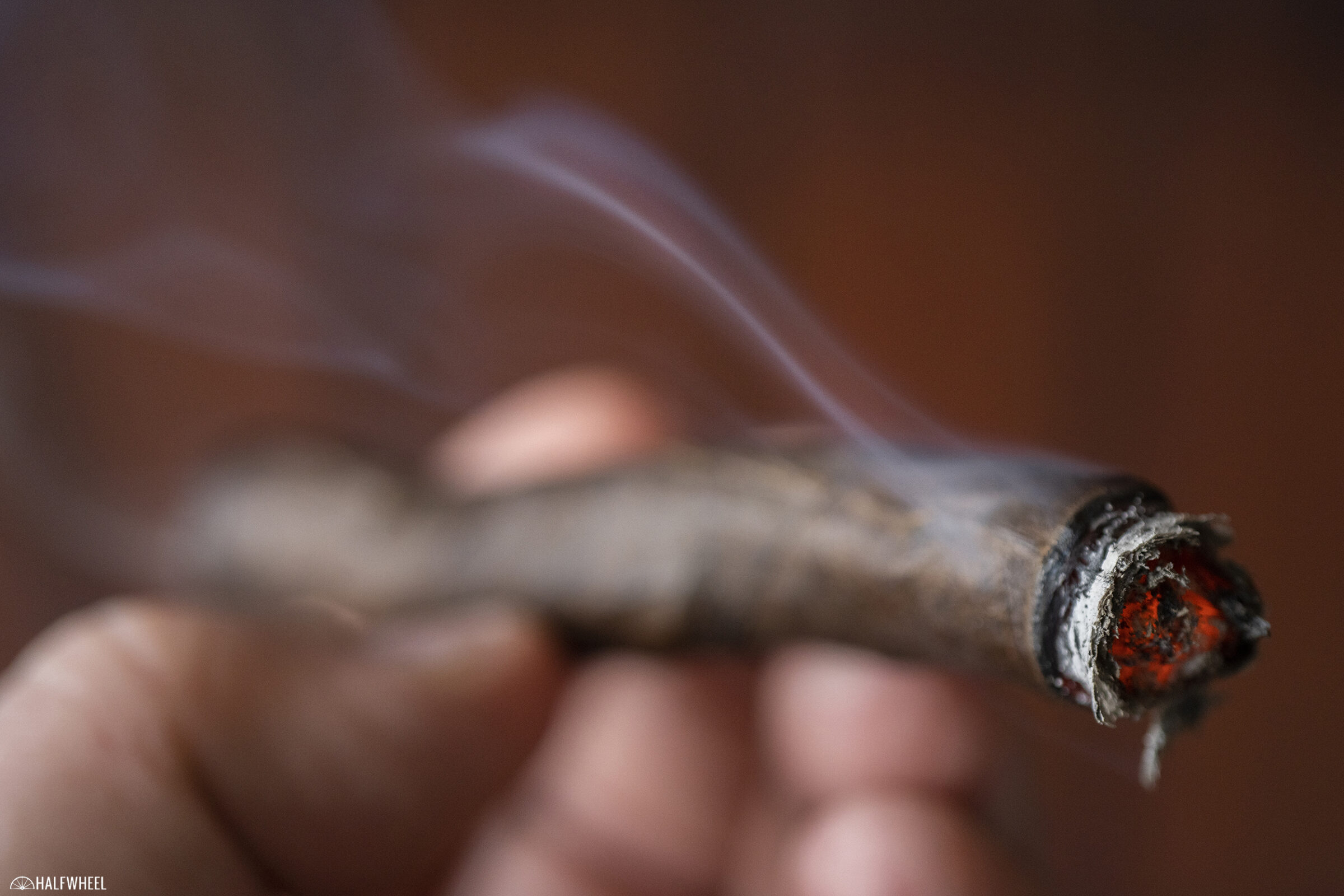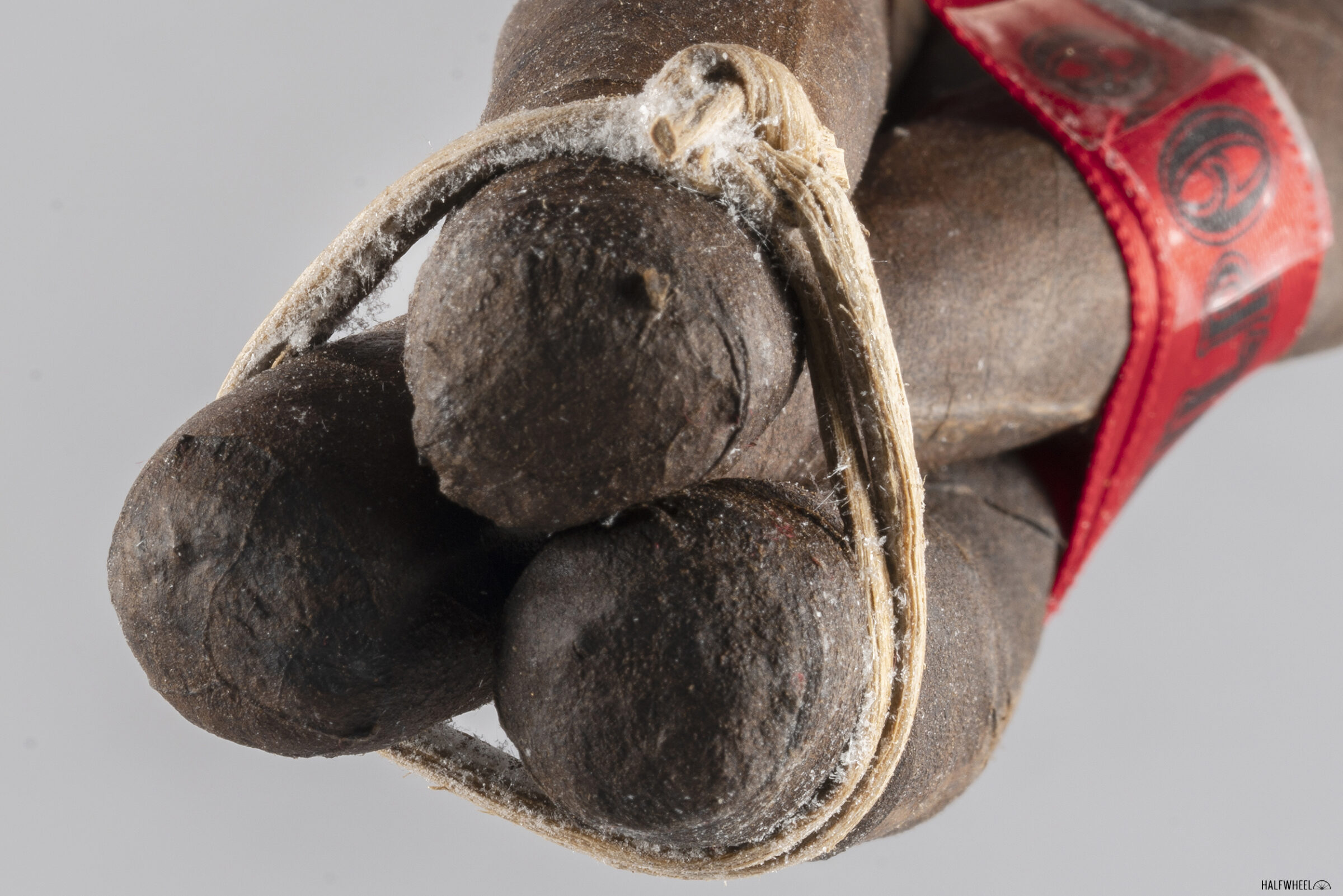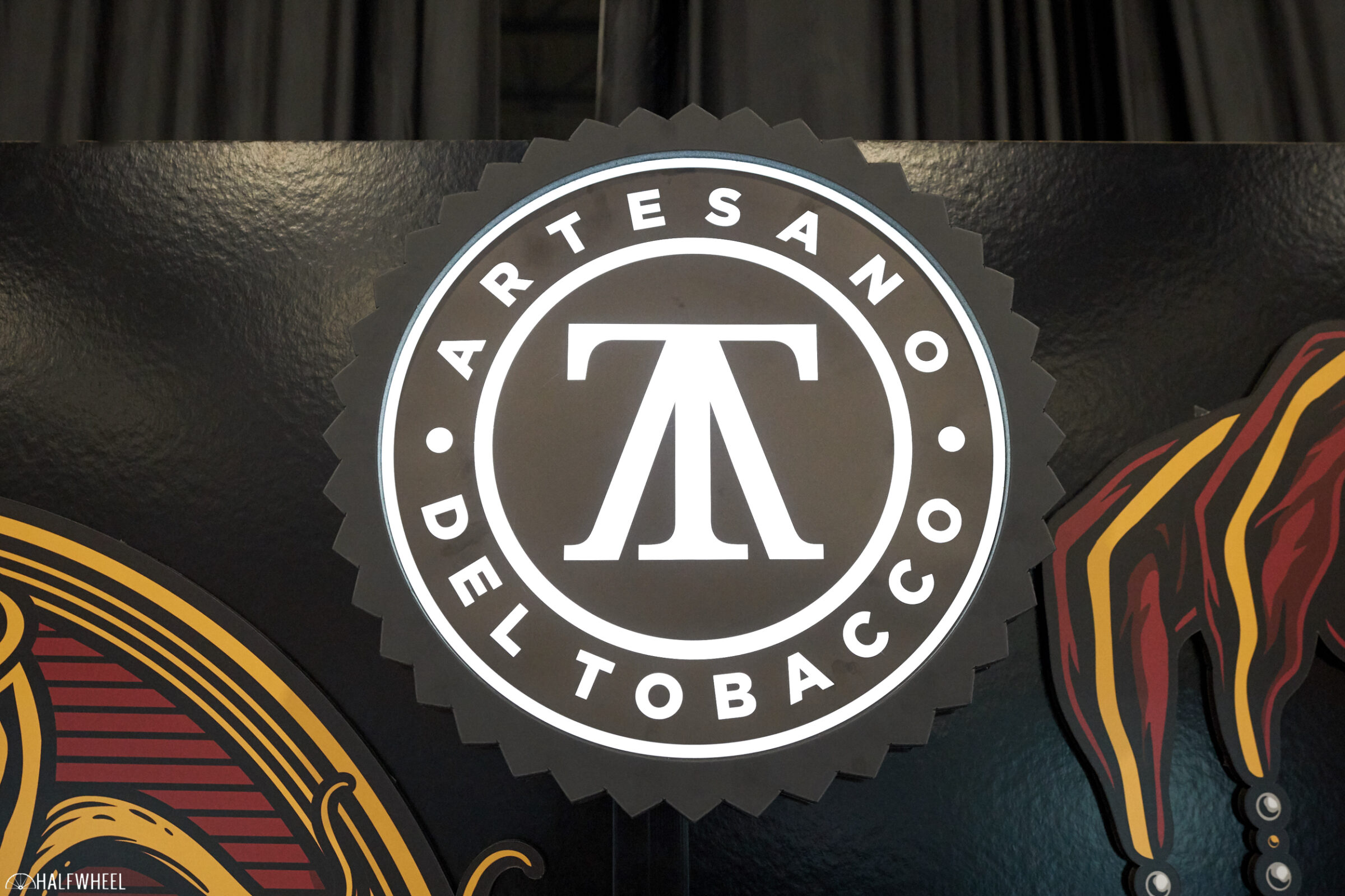Earlier this year, Artesano Del Tobacco shipped its second regular production line, which debuted with three different vitolas. Named El Pulpo—which translates to The Octopus from Spanish—the line is made with a Mexican San Andrés wrapper covering a binder and fillers grown on AJ Fernandez’s farms in Nicaragua.
Artesano Del Tobacco said it spent more than five years developing the El Pulo blend, and while the company’s first line, Viva La Vida, is made at the AJ Fernandez factory in Estelí, the new line is made at AJ Fernandez’s San Lotano factory in Ocotal, Nicaragua.
In June, Artesano Del Tobacco announced it was adding a new vitola in the El Pulo line, a culebra named Octo Ocho; Octo is a Latin word that translates to Eight, while Ocho also translates to Eight from Spanish, meaning the entire name of the cigar translates to The Octopus Eight Eight. Unlike the other sizes in the line that are box-pressed, Octo Ocho is a round cigar.
In his news story when the cigars were announced, Charlie Minato shared some details about the culebra vitola:
The origins of the culebra cigar are in dispute, but the result is one—typically, three—of the most unique-looking cigars you’ll see. The cigars that make up a single culebra are twisted together, almost like the vines of a tree wrapping around one another. Typically, a culebra usually contains three cigars that are similar to petite lanceros in size, though the cigars can vary in length, and there are some culebras that are just two cigars.
To make a single El Pulpo Octo Ocho, Artesano del Tobacco is using three 7 x 38 cigars. The cigars are rolled like normal cigars, but while they are still moist, they are twisted together, ensuring that the individual cigars will hold their unique shapes once the ribbons holding the cigars together are removed. Despite the twisted appearance, the cigars are made to be smoked like any other: one at a time, cut from the cap and lit from the foot.
The MSRP is set at $40 per culebra—meaning each individual cigar is about $13.33—and the cigars are packaged with three culebras in individual coffins per box, for a total of nine cigars. The El Pulo Octo Ocho is not a limited edition—it will be offered for sale in batches three times per year—and the first batch started shipping to retailers on Sept. 8.
- Cigar Reviewed: El Pulo Octo Ocho
- Country of Origin: Nicaragua
- Factory: San Lotano Factory
- Wrapper: Mexico (San Andrés)
- Binder: Nicaragua
- Filler: Nicaragua
- Length: 7 Inches
- Ring Gauge: 38
- Vitola: Culebra
- MSRP: $13.33 (Culebra of 3 Cigars, $40)
- Release Date: Sept. 8, 2023
- Number of Cigars Released: Regular Production
- Number of Cigars Smoked For Review: 3
Like just about any culebra, the El Pulo Octo Ocho is visually unique: each individual cigar is bent and twisted so much that it almost looks impossible to actually smoke. The wrappers are a dull, dark brown color, and while there is the slightest hint of oil present, each cigar is extremely rough to the touch. In addition, all three cigars are nicely firm when squeezed and feature multiple overt veins running up and down their lengths. Aromas from the wrappers are relatively faint in nature, but I can make out notes of earth, nuttiness, cinnamon, barnyard and generic sweetness. However, scents from the feet are much stronger, with distinct leather leading gritty earth, oak, peanuts, hay and light citrus peel. Finally, after straight cuts, the cold draws include cinnamon, earth, peanut shells, straw, yeast and berry sweetness.
Flavors of anise and espresso combined with black pepper and some light spice on my tongue start off the Octo Ochos immediately after I toast the feet of the cigars, and while the anise remains at the forefront of the profile during the first third, the espresso moves to the background and is replaced as one of the main flavors by a distinct leather flavor. Secondary notes of earth, peanuts, oak, toasted bread and dark chocolate flit in and out at various points, while the retrohale features plenty of black pepper and a massive maple syrup sweetness that shows up for the first time about 15 puffs in. Flavor ends the first third at medium-plus, while the body hits a solid medium and the strength is at a point just over the medium mark. Construction-wise, none of the three cigars give me any issues whatsoever when it comes to the draws, burn lines or smoke production.
There is still some noticeable spice and pepper in the profile as the second third of the El Pulo Octo Ocho begins, but the main flavors in the profile have switched to a combination of oak and powdery cocoa nibs. Additional flavors include salted peanuts, sourdough bread, leather tack, gritty earth, anise and hay. While I taste a mint leaf flavor on the finish of my final cigar around the halfway point, it does not stick around long enough to impact the profile in a significant way. In addition, there is quite a bit of black pepper noticeable on the retrohale but not nearly enough to overwhelm the maple syrup sweetness that is also present. Flavor bumps up to medium-full, but the body stays put at a solid medium and the strength increases to medium-plus. The draws and smoke production continue along their excellent paths for all three cigars, but two cigars run into minor burn issues that necessitate one correction each with my lighter.
While a combination of oak and cocoa nibs continues to top the profile during the final third of the cigar, I can feel the strength in the blend building as the burn line progresses. Secondary flavors include brewed coffee, leather tack, peanuts, sourdough bread and light cloves, but the amount of black pepper on the retrohale increases noticeably while the maple syrup sweetness has been cut slightly. Flavor remains at medium-full, but the body and strength have both increased to medium-plus and full, respectively. Finally, the construction was great for two cigars, and while the third had no issues when it came to the draw or smoke production, the burn did need a touch-up just before I put the nub down with less than an inch remaining.
Final Notes
- As I mentioned in my review of the Davidoff Culebras Limited Edition Yamasá, the culebra—which translates to snake from Spanish—has a long history: some people claim that the vitola was invented because Cuban rollers were allowed to take three cigars home each day to smoke after work, but that many of those cigars ended up on the black market. To combat this, the factories decided to twist the cigars given to rollers in order to make them more difficult to sell. Another school of thought was that factories forced the rollers to smoke culebras due to the fact that those vitolas were easier to keep track of and account for.
- While most non–Cuban culebras seem to measure between 6-7 inches long, the classic Cuban size of the culebras is actually 5 3/4 x 39.
- As you can see from the photograph above, one culebra had what looked like mold growing on the twine that held the three cigars together at the top. However, the mold was not present on the twine near the feet of the cigars, and I could not find any more in any other locations after a physical inspection.
- In addition to the above, both the boxes and the coffins that the culebras were packaged in smell very strongly of paint. The cigars are packaged in cellophane inside the coffins, and the culebra that I took out of cellophane to photograph and weigh did not smell of paint as far as I could tell, but if you purchase a box of these cigars I would strongly consider removing them from their respective coffins.
- Despite the way it looks, just about every culebra I have smoked has featured very good to excellent construction when it comes to the burn and draw.
- Having said the above, you have to smoke it correctly; there have been times when I have read or heard about people cutting and smoking all three cigars at once.
- One of the best—if not the best—non-Cuban cigar I have ever smoked happens to be a culebra; specifically, the Oliva Serie V Culebra. That cigar was released at a number of events intended to introduce the newly launched Serie V line in 2007, at which a total of 100 Culebras were raffled off between twenty or so events. Another batch incorporating the same blend was given out during the Nicaraguan Cigar Festival in 2011.
- The cigars smoked for this review were purchased by halfwheel.
- Final smoking time averaged one hour and six minutes for all three cigars.
- If you would like to purchase any of the El Pulo Octo Ocho cigars, site sponsor Atlantic Cigar Co. has it for sale on its website.
I have always enjoyed smoking culebras and it helps when the blend is enjoyable as well. Thankfully, the latter is not an issue for the El Pulo Octo Ocho, as main flavors of oak, anise, cocoa nibs and leather combine with some distinct maple syrup sweetness on the retrohale. Having said that, the combination of black pepper and full strength does have an impact on the enjoyment of the final third, and while the overall construction was quite good, two cigars needed multiple corrections with my lighter to avoid larger issues. In the end, I enjoyed the El Pulo Octo Ocho quite a bit for the cigar it is now, but I think that some time aging—outside of their coffins and box, natch—will do wonders for the blend’s balance in the final third down the road.

